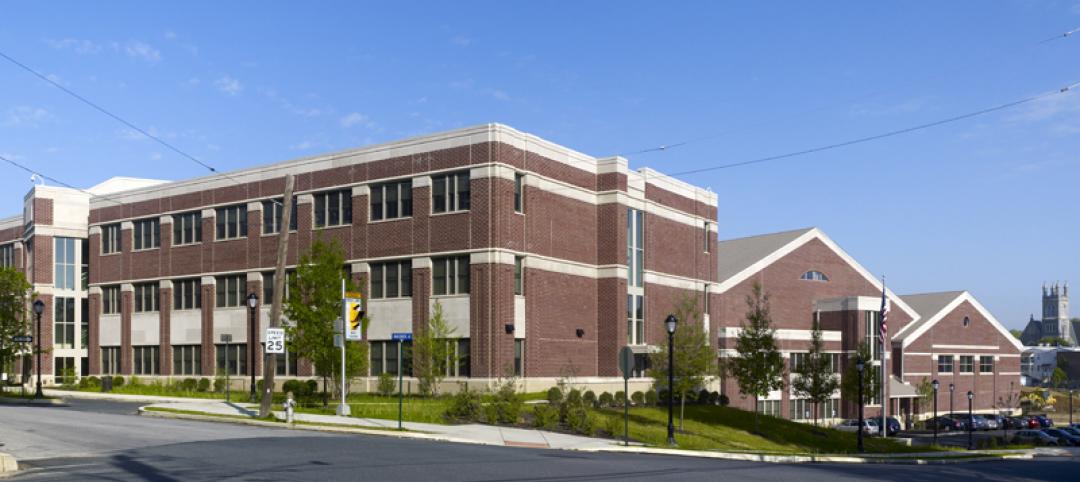Projects are being impacted by industry challenges as well as other macro-level forces at a pace not seen before. While the market conditions may be extraordinary, one thing remains true: A late project impacts revenue and production as well as commitments made to your key customers.
The good news is, setting realistic expectations for both your internal team and the team you hire to manage and build your project will help you avoid common pitfalls so you can experience a better, more predictable outcome.
Here are three characteristics of effective owner project planning:
1. Plan Project Success with Your Internal Team First
Before you engage a designer and contractor, know what you need and where you can (and can't) compromise. Think of it as a pre-plan. Start by defining your specific short-term business needs and your long-term goals. Delaying or skipping this pre-plan process can lead to less flexibility in your decision-making down the road.
Keep in mind that your needs and the order you prioritize them can look very different from project to project. For many clients, avoiding unplanned shutdowns is critical, while for others, cost of schedule (COS) is a driving factor: It defines the daily cost, typically in dollars, for every day the job is not complete.
There are a number of other factors that drive decision making, and a great place to turn for insight is your internal stakeholders who are directly or indirectly impacted by the project; some key areas to plan for might include:
- Environmental, health and safety measures include identifying prequalified contractors and subs who meet your safety requirements.
- Quality control when installing specialized equipment and MEP systems to industry specifications. This could also include the reduction of airborne contamination when working in adjacent areas such as CGMP spaces.
- Coordination of owner-purchased, contractor-installed equipment.
- Planning and communication for shutdowns and tie-ins so interruptions are planned, including an appropriate sign-off process from all impacted parties.
- Ability of the team to test, commission and validate installed systems.
Another critical part of the process is contingency planning. Inevitably, challenges or delays will occur. Establish cost and schedule contingencies to avoid disappointment, especially with external forces like COVID-19, labor shortages, supply chain delays, fluctuating prices, delayed quotes and cost increases on delayed projects that come back online. Keep your design and construction experts on speed dial; reach out to them early and often about market conditions, potential project risks and expectations.
Be careful not to get completely wrapped up in things you can’t control. Take time also to define successes and the key priorities by which these will be measured. Internal and external factors developed from the examples above can help, along with other points like contractor turnover date, design aesthetics, budget and diverse spending. With your definition for success and priorities in hand, work backward to list them from most to least important.
2. Select the Appropriate Contract Delivery Method
Decide which contract delivery method best aligns with your needs and top priorities; this could be design-build, CM-R, design-bid-build, IPD or EPC. Schedule and project design complexity, desire for cost transparency and the ebb and flow of market conditions should all be considered in selecting the appropriate contract delivery method.
Evaluating the inherent strengths and weaknesses of the delivery methods against the project goals is an essential step. Still, it is important to know there is no “go-to” delivery method that fits every owner or every project. Keep an open mind on which delivery method works best and be willing to embrace change.
3. Define Project Goals, Measures and Accountability
Once you select a project team (designer, contractor or design-builder), communicate your goals and needs in writing and create metrics to measure progress. One way to do this is to clearly define your conditions for success. Work with the project team to develop mutually agreeable metrics that align with your project priorities. Monitoring weekly progress will keep tasks on schedule and your priorities at the forefront during construction.
Encourage the project team to quickly voice any concerns before they become significant issues. Establishing an open line of communication between the internal team, designer and contractor provide a “working together” mindset to set the stage for success: When a team has discussions upfront, the project runs smoother, there are fewer changes and unknown costs and there is a better outcome for all in the end.
Describing the objectives of the finished project and the business value the project will achieve makes it crystal clear to all on the team what each member is striving toward. Measuring progress regularly enforces accountability. Specific project metrics will differ for each job, but you can determine an agreeable process for everyone to follow by effectively communicating with the project team.
A successful building project begins well before groundbreaking or moving equipment. It starts from within: within your internal team building consensus on why you are making this investment, within the process to select the best contract method that aligns with your definition of success and within the project team knowing that everyone is walking the same path to that success.
Related Stories
| May 23, 2012
New hospitals invest in data centers to manage growth in patient info
Silver Cross became one of the first hospitals to install patient tracking software so families know where a patient is at all times. New communication equipment supports wireless voice and data networks throughout the hospital, providing access to patients and their families while freeing clinicians to use phones and computers where needed instead of based on location.
| May 23, 2012
Summit Design+Build selected as GC for Chicago restaurant
Little Goat will truly be a multifunctional space. Construction plans include stripping the 10,000 sq. ft. building down to the bare structure everywhere, the installation of a new custom elevator and adding square footage at the second floor with an addition.
| May 22, 2012
Batson-Cook names Partin VP of Business Development
Partin joins general contractor from Georgia Hospital Association.
| May 22, 2012
Casaccio Architects and GYA Architects join to form Casaccio Yu Architects
Architects Lee A. Casaccio, AIA, LEED AP, and George Yu, AIA, share leadership of the new firm.
| May 22, 2012
O’Connell Robertson acquires Mitchell Design Consultancy
Mary Ann A. Mitchell, AIA, IIDA, MDC principal and founder, joins O’Connell Robertson as part of the acquisition.
| May 21, 2012
$61,000 awarded to students in Cleveland’s ACE Mentor Program
Mayor Frank G. Jackson gives keynote address at scholarship event for 80 Cleveland Metropolitan School District students involved in the ACE Mentor Program, which provides guidance and assistance for students interested in careers in the integrated construction industry.
| May 21, 2012
Wayne, Pa.'s Radnor Middle School wins national green award
Radnor Middle School among the most sustainable schools in the U.S.
| May 21, 2012
Winchester High School receives NuRoof system
Metal Roof Consultants attended a school board meeting and presented a sloped metal retrofit roof as an alternative to tearing off the existing roof and replacing it with another flat roof.
| May 17, 2012
EMerge Alliance forms new Campus Microgrid Technical Standards Committee
Intel leading the charge to connect multiple DC microgrids throughout commercial buildings; others invited to join effort.
| May 16, 2012
AIA issues guide to IGCC
Getting the IgCC adopted in all 50 states and in jurisdictions across the country is the primary mission of the ICC, which published the code in March.

















